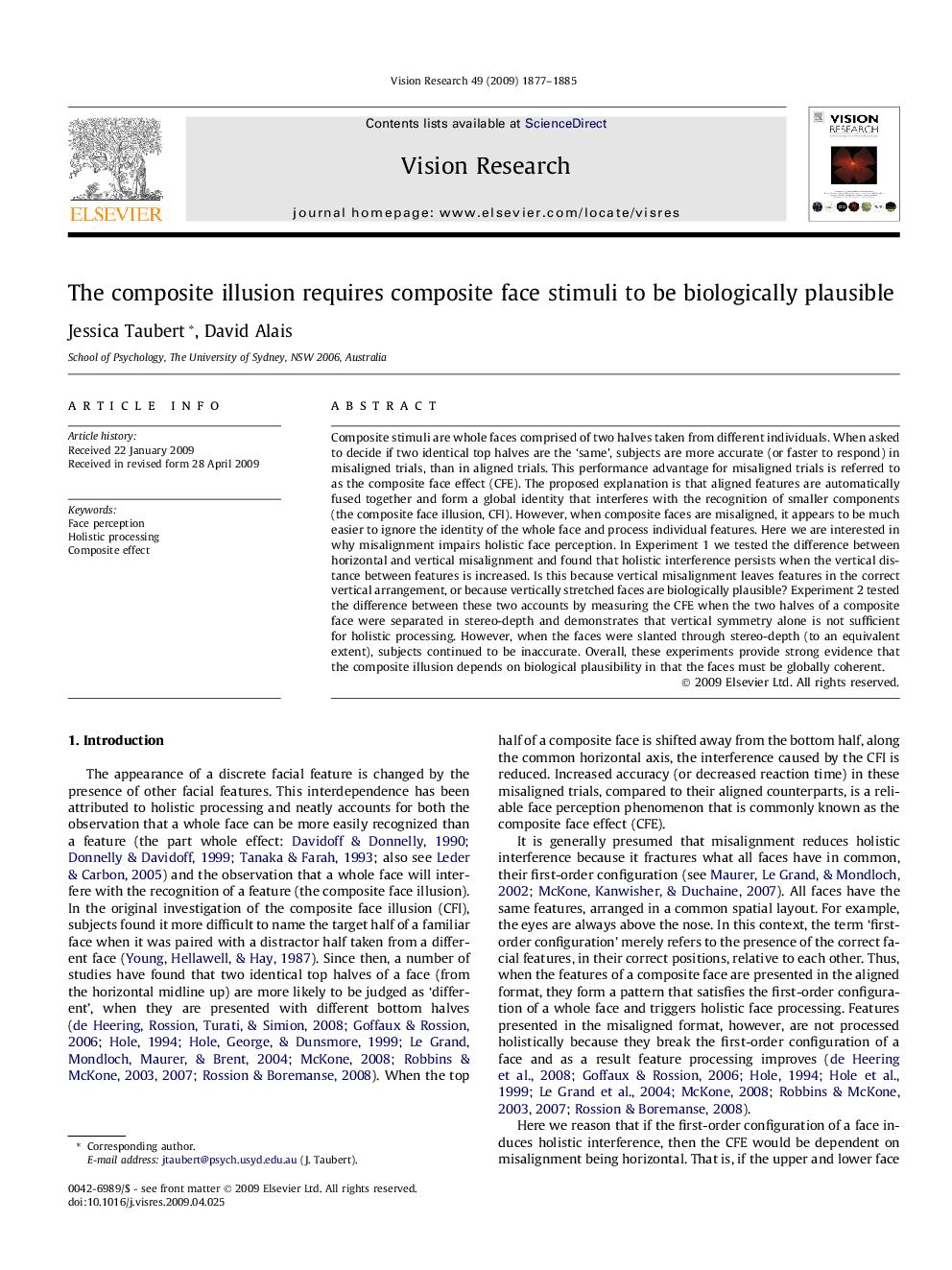| Article ID | Journal | Published Year | Pages | File Type |
|---|---|---|---|---|
| 4035268 | Vision Research | 2009 | 9 Pages |
Composite stimuli are whole faces comprised of two halves taken from different individuals. When asked to decide if two identical top halves are the ‘same’, subjects are more accurate (or faster to respond) in misaligned trials, than in aligned trials. This performance advantage for misaligned trials is referred to as the composite face effect (CFE). The proposed explanation is that aligned features are automatically fused together and form a global identity that interferes with the recognition of smaller components (the composite face illusion, CFI). However, when composite faces are misaligned, it appears to be much easier to ignore the identity of the whole face and process individual features. Here we are interested in why misalignment impairs holistic face perception. In Experiment 1 we tested the difference between horizontal and vertical misalignment and found that holistic interference persists when the vertical distance between features is increased. Is this because vertical misalignment leaves features in the correct vertical arrangement, or because vertically stretched faces are biologically plausible? Experiment 2 tested the difference between these two accounts by measuring the CFE when the two halves of a composite face were separated in stereo-depth and demonstrates that vertical symmetry alone is not sufficient for holistic processing. However, when the faces were slanted through stereo-depth (to an equivalent extent), subjects continued to be inaccurate. Overall, these experiments provide strong evidence that the composite illusion depends on biological plausibility in that the faces must be globally coherent.
